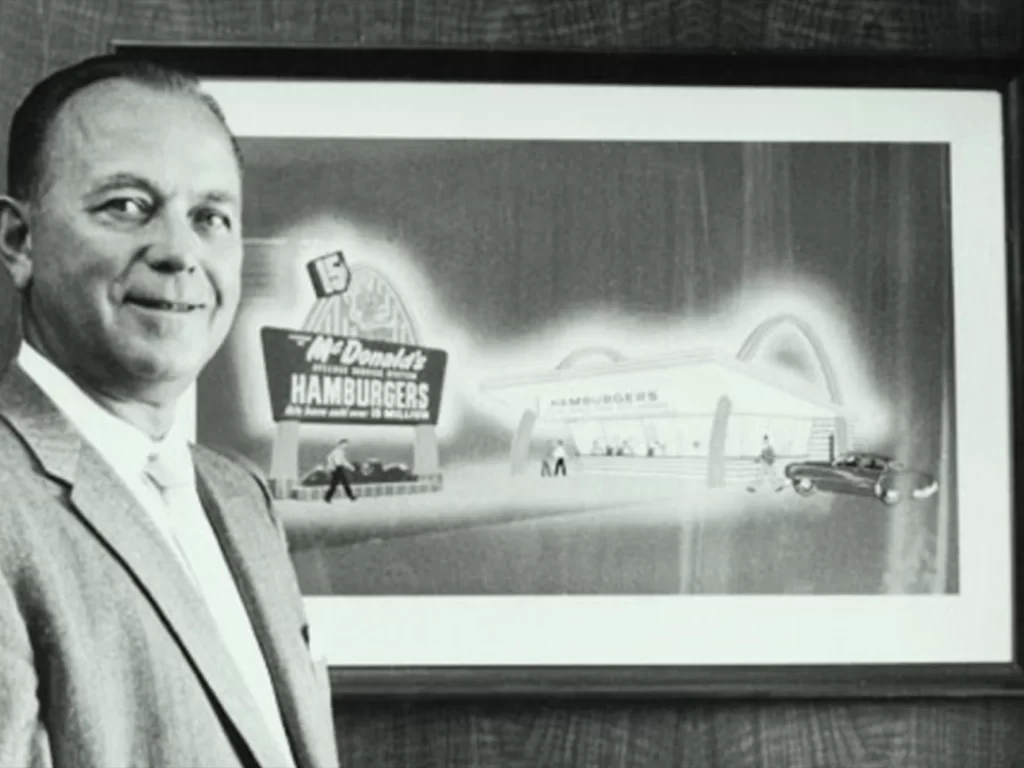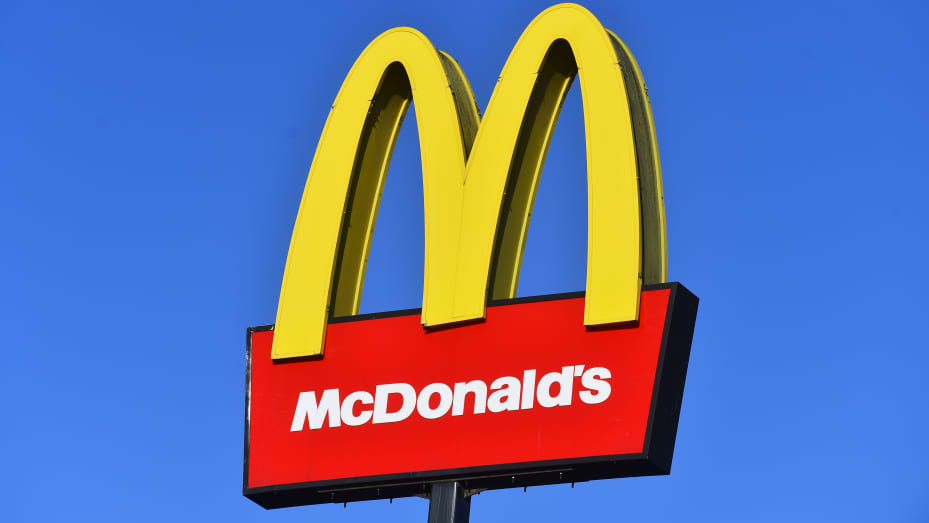In the realm of fast food and quick-service dining, there is a name that stands above the rest—McDonald’s. From its humble beginnings as a single hamburger stand to its current status as an iconic global franchise, McDonald’s has redefined the way the world approaches dining out. With its golden arches symbolizing familiarity and consistency, the story of McDonald’s is not just a tale of culinary success, but a reflection of the evolving tastes, cultural shifts, and innovative business practices that have shaped the modern fast-food landscape. In this article, we’ll explore the Marketing Strategies and Success Factors of McDonald’s.
McDonald’s is the world’s largest fast food restaurant chain, with over 39,000 locations in over 100 countries. The McDonald’s saga commenced in 1940, when Richard and Maurice McDonald introduced the concept of a drive-in restaurant in San Bernardino, California. Their pioneering approach to streamlined service involved a limited menu, speedy assembly-line cooking, and a commitment to delivering food to customers at unprecedented speeds. This revolutionary “Speedee Service System” laid the foundation for what would become one of the most recognizable food chains worldwide.
Ray Kroc, a visionary entrepreneur, recognized the potential of the McDonald brothers’ concept and partnered with them in 1954 to establish the first franchised McDonald’s restaurant in Des Plaines, Illinois. Kroc’s shrewd business acumen transformed a single-location venture into a sprawling franchise empire. His emphasis on consistency, efficiency, and standardized operations propelled McDonald’s into the international spotlight, establishing the franchise model that would be emulated by countless businesses in the future. He introduced a number of innovations to the company, including the Golden Arches logo, the Happy Meal, and the drive-thru window.

The introduction of the iconic Big Mac in 1967 marked a significant milestone, symbolizing McDonald’s innovative spirit and ability to create enduring menu items that resonate with diverse palates. This era saw the brand evolve from a local sensation to a global phenomenon, with its golden arches becoming an unmistakable symbol of convenience, affordability, and comfort.
McDonald’s is known for its affordable, quick, and convenient food. The company’s menu features a variety of hamburgers, chicken, french fries, and desserts. McDonald’s also offers a variety of coffee drinks and smoothies.
McDonald’s is a popular destination for families, children, and adults alike. The company’s restaurants are clean, well-lit, and have a friendly atmosphere. McDonald’s is also a major employer, with over 2 million employees worldwide.
In recent years, McDonald’s has faced some challenges, including declining sales in the United States and increasing competition from other fast food chains. However, the company is still one of the most successful brands in the world. McDonald’s is committed to innovation and growth, and it is likely to remain a major player in the fast food industry for many years to come.
What Makes McDonald’s so successful? – Success Factors of McDonald’s
McDonald’s remarkable success in the fast-food industry is the result of a carefully crafted combination of factors that have propelled it to become a global culinary juggernaut. From its strategic business approach to its iconic branding and operational efficiency, McDonald’s has mastered the art of delivering consistent quality, convenience, and affordability to a diverse customer base. Let’s delve into the key success factors that have contributed to McDonald’s enduring triumph:
Franchise Model and Scalability: Central to McDonald’s success is its franchise model, introduced and perfected by Ray Kroc. This system allowed the brand to rapidly expand its reach while maintaining a consistent level of service and menu offerings. Franchisees are provided with comprehensive training, operational guidelines, and ongoing support, ensuring that the McDonald’s experience remains standardized across locations worldwide.
Iconic Branding and Recognition: The golden arches of McDonald’s are universally recognized symbols of fast food. The brand’s consistent branding, including its logo, color scheme, and even the architecture of its restaurants, has created a sense of familiarity and trust among consumers. This recognition extends beyond language and cultural barriers, making McDonald’s an approachable and reliable dining choice.
Efficient Operations and Systematic Processes: McDonald’s has perfected the art of operational efficiency. Its streamlined processes, such as the assembly-line cooking method and the use of pre-packaged ingredients, ensure that orders are prepared quickly and consistently. This efficiency not only enhances customer satisfaction by minimizing wait times but also contributes to cost control and profitability.
Menu Innovation and Adaptation: McDonald’s has demonstrated an impressive ability to adapt its menu to changing consumer preferences and cultural tastes. While core items like the Big Mac remain consistent, the brand introduces localized offerings to cater to regional palates. This flexibility allows McDonald’s to remain relevant and appealing to diverse customer segments.
Value and Affordability: One of McDonald’s primary draws is its affordability. The brand’s value menu, promotions, and combo meals provide customers with budget-friendly options without compromising on taste or quality. This pricing strategy has not only attracted cost-conscious consumers but has also fostered loyalty among a wide demographic.
Strategic Marketing and Emotional Connection: McDonald’s marketing campaigns tap into emotional connections with customers, often leveraging nostalgia, family moments, and the joy of sharing a meal. The brand’s iconic “I’m Lovin’ It” jingle and memorable advertisements have helped build an emotional rapport with consumers, making McDonald’s more than just a place to eat—it’s a part of their experiences and memories.
Consistency and Quality Assurance: McDonald’s stringent quality control measures ensure that customers receive the same experience no matter where they dine. The brand’s global supply chain management, standardized recipes, and rigorous training programs for employees contribute to the consistent taste and quality of its offerings.
Global Reach and Accessibility: With its vast network of restaurants spanning across continents, McDonald’s has ensured its accessibility to a wide range of consumers. Its presence in urban centers, suburban areas, and even at transportation hubs has made McDonald’s a convenient dining choice for travelers and locals alike.
Technological Adaptation: McDonald’s has embraced technological advancements to enhance customer experience. Features like self-service kiosks, mobile ordering, and delivery options cater to modern consumer preferences for convenience and customization.
In conclusion, McDonald’s remarkable success is the result of a strategic blend of factors that cater to consumers’ needs for convenience, affordability, quality, and familiarity. By prioritizing operational efficiency, maintaining consistent branding, adapting to changing preferences, and fostering emotional connections, McDonald’s has become not just a fast-food chain, but a global cultural phenomenon that continues to shape the way we dine and interact with food.
Marketing Strategies of McDonald’s
McDonald’s owes much of its success to a series of carefully crafted marketing strategies that have connected with customers on a profound level. These strategies go beyond mere advertising; they encapsulate the brand’s values, customer-centric approach, and commitment to delivering an exceptional dining experience. Let’s delve into the comprehensive marketing strategies that have driven McDonald’s global success:
Consistent Branding and Iconic Symbols:
One of the most important aspects of McDonald’s marketing strategy is their consistent branding and use of iconic symbols.
Their golden arches logo is instantly recognizable around the world, making it one of the most famous logos ever created. This consistency allows them to create a strong sense of familiarity and trust with their customers, who can rely on getting the same quality product no matter where they go.
They also use other iconic symbols such as Ronald McDonald and the Big Mac to reinforce their brand identity and build loyalty among customers. All of these efforts help to ensure that McDonald’s stands out in a crowded field and maintains a competitive edge over other fast food companies.
Emotional Marketing
Emotional marketing is another key aspect of McDonald’s marketing strategy. Instead of focusing solely on rational arguments or facts about their products, they aim to evoke emotions in their customers through advertising and promotions.
For example, their ad campaigns often feature happy families enjoying meals together or kids having fun playing in playgrounds. This helps to associate positive feelings with the brand and make customers feel good when thinking about McDonald’s.
Additionally, they use nostalgia as part of their emotional marketing strategy by reminding older generations of childhood memories associated with the brand. This creates a powerful connection between customers and the brand and encourages repeat visits.
Ultimately, emotional marketing helps McDonald’s stand out in a crowded field and build a loyal following of customers who enjoy coming back again and again.
Strategic Partnerships and Collaborations
Another key aspect of McDonald’s marketing strategy is strategic partnerships and collaborations. In order to expand their reach and tap into new markets, they frequently form alliances with other businesses and organizations.
For instance, they have partnered with Coca-Cola to serve their beverages in restaurants worldwide. They have also teamed up with popular brands such as Disney and Marvel to release limited edition Happy Meal toys based on popular movies and characters. These collaborations not only increase exposure but also provide opportunities to introduce new products and experiences to customers.
Furthermore, they leverage social media influencers and celebrities to promote their products and events which further increases their visibility and appeal to younger audiences.
Overall, strategic partnerships and collaborations allow McDonald’s to diversify their offering and attract new customers while strengthening existing relationships.
Menu Innovation and Limited-Time Offers
Menu innovation and limited-time offers are an essential component of McDonald’s marketing strategy. They regularly introduce new menu items and limited-time offers to keep things interesting for customers and encourage repeat visits.
For example, they introduced all day breakfast nationally in response to customer demand for more convenient options. They also offer seasonal items like Shamrock Shake during March and Pumpkin Spice Latte during fall. Limited time offers like McRib sandwich and McLobster roll are offered regionally depending on local preferences.
These initiatives help drive sales by creating excitement and buzz around new items and keeping customers interested in trying something different each time they visit. It also gives customers a reason to come back repeatedly to try new items before they disappear off the menu.
Overall, menu innovation and limited-time offers are crucial tools for McDonald’s to stay relevant and appealing to customers.
Localized Offerings
Localized offerings are another key element of McDonald’s marketing strategy. By tailoring their menus to regional tastes and preferences, they can better meet the needs of diverse customer bases across various locations.
For example, they offer unique items like Mc Aloo Tikki in India which includes spicy potato patties served in a bun made from paratha flatbread. In Japan, they offer Teriyaki burger which features a beef patty glazed with teriyaki sauce and topped with red leaf lettuce, tomato, and mayonnaise. In Australia, they offer Aussie BBQ Burger which consists of two beef patties, bacon, cheese, pickles, and special BBQ sauce.
These localized offerings help McDonald’s cater to specific cultural and dietary preferences, increasing customer satisfaction and driving repeat visits. Moreover, it shows that the company cares about its customers and takes the effort to understand their taste buds which builds trust and loyalty.
Overall, localized offerings are an effective way for McDonald’s to adapt to changing consumer trends and remain competitive in the global marketplace.
Digital Engagement and Technology
Digital engagement and technology are important components of McDonald’s marketing strategy. The company leverages digital platforms to connect with customers and enhance their overall experience.
For instance, they launched mobile ordering system called “McD Tech” (sold to IBM in 2021) which allows customers to place orders online and pick them up at designated times without waiting in line. They also introduced self-ordering kiosks in some stores allowing customers to customize their orders and pay using contactless cards or smartphone apps.
Additionally, they utilize social media platforms like Twitter, Instagram, and Facebook to share information about new products, promotions, and events. Their website provides nutritional information and ingredient sourcing details which helps customers make informed decisions.
Furthermore, they use data analytics and artificial intelligence to optimize operations and improve the customer experience. Overall, digital engagement and technology enable McDonald’s to streamline processes, gather valuable insights, and create seamless interactions with customers.
Value Proposition and Promotions
McDonald’s value proposition lies in providing fast, affordable food in a clean and welcoming environment. This has been the cornerstone of their success since the beginning and continues to resonate with consumers today. However, over the years, they have evolved their approach to include promotions and discounts aimed at attracting price-sensitive customers and encouraging repeat visits.
For instance, they often run national promotions tied to major sporting events like FIFA World Cup where they offer exclusive merchandises and limited-time menu items. During holidays like Halloween and Christmas, they launch festive decorations and limited-time treats like gingerbread latte and hot cocoa. They also offer seasonal items like Eggnog shake and Peppermint mocha during winter months.
They also offer value meals which bundle multiple items together at a lower cost than purchasing separately. These bundled deals appeal to families and groups looking for a quick and affordable meal option. They also offer happy meal boxes which contain small versions of popular menu items along with toys targeted towards children.
In addition to these promotions, McDonald’s also runs regular discounts and coupons through email newsletters and text message campaigns. Customers can sign up for alerts and receive notifications when new promotions become available.
Overall, McDonald’s value proposition combined with promotions and discounts creates a compelling offer for customers seeking convenience, affordability, and variety in their dining choices.
Storytelling and Transparency
McDonald’s uses storytelling in several ways to communicate their values, mission, and history to customers. One such method is sharing stories behind how certain menu items were created or inspired by real people and places.
For example, Big Mac was invented by Jim Delligatti, who wanted to create a larger version of hamburger. Similarly, Filet-O-Fish was inspired by a Cincinnati franchisee named Lou Groffsky who noticed his fish fry business booming during Lent. Sharing these origin stories adds authenticity and nostalgia factor to the brand and makes customers feel connected to the brand’s heritage.
Transparency is another critical aspect of McDonald’s marketing strategy. With growing concerns about healthy eating habits and sustainability practices, companies need to demonstrate transparency in their operations and supply chain management.
McDonald’s addresses this issue by publishing detailed nutrition facts on all menu items and disclosing sources of ingredients used in their products. They also provide information on animal welfare standards and environmental impact of their farming practices. Being transparent enables customers to make informed decisions about what they eat and reassures them that the company prioritizes ethical considerations beyond just profit margins.
Storytelling and transparency work hand in hand to strengthen McDonald’s relationship with customers. By communicating openly and honestly about their past, present, and future plans, McDonald’s positions itself as a responsible corporate citizen committed to delivering quality experiences while making positive contributions to society.
In conclusion, McDonald’s marketing strategies have successfully created a global brand that resonates with consumers of all ages and backgrounds. By forging emotional connections, embracing technology, adapting to local preferences, and upholding transparency, McDonald’s has created a comprehensive marketing approach that extends beyond advertising to shape the overall customer experience.
Also Read: Marketing Strategies and Marketing Mix of Starbucks Coffee
To read more content like this, subscribe to our newsletter
Go to the full page to view and submit the form.


